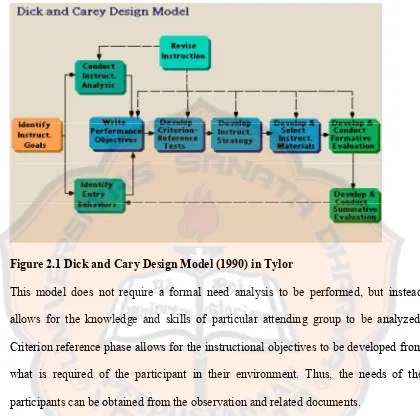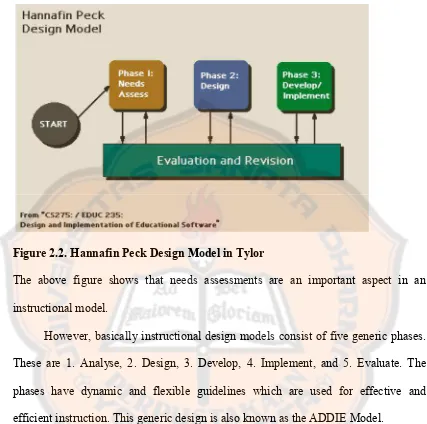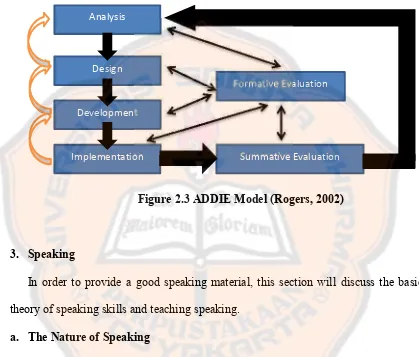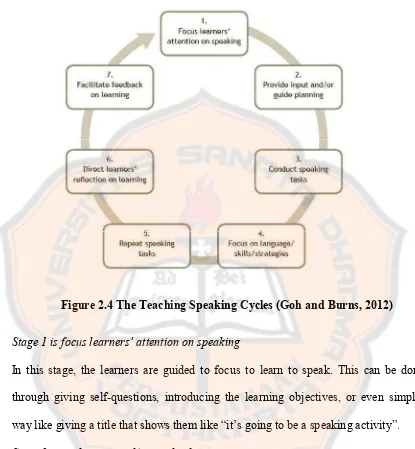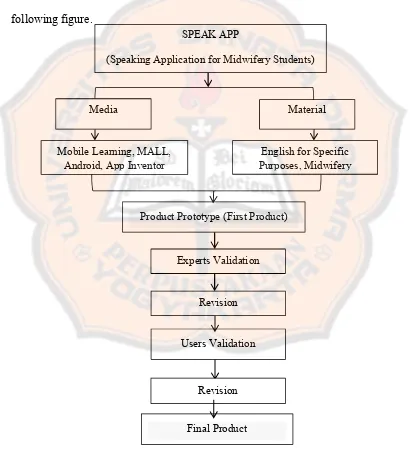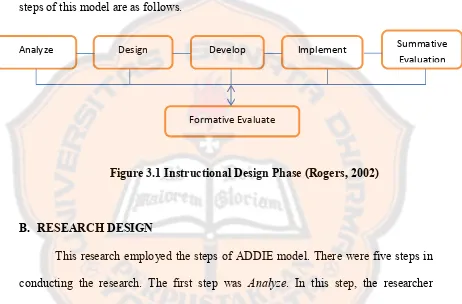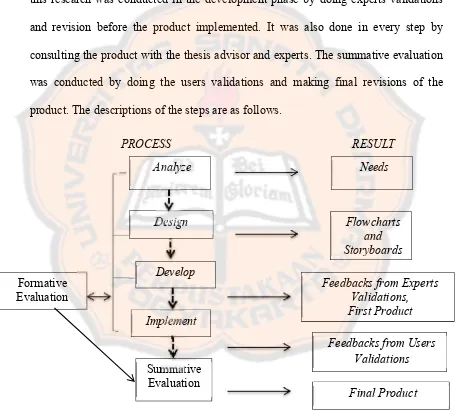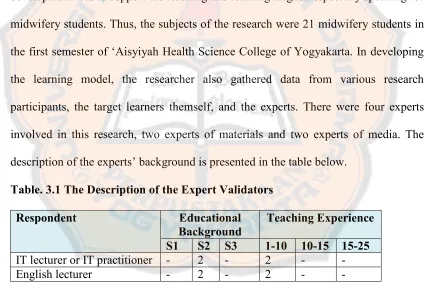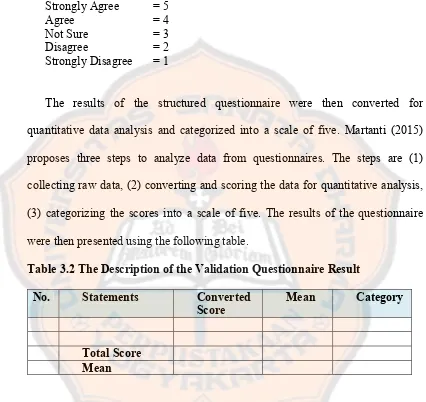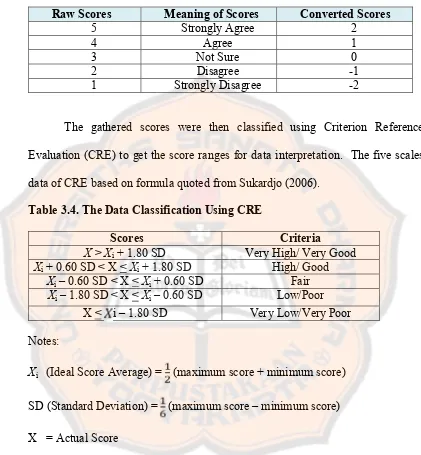Praptiningrum, Dhenok, 2015, Hugo’s Ideology Transformation in Les Miserables: A Religious Monarchist to A Radical Republican. Yogyakarta: English Language Studies of Graduate Level, Sanata Dharma University.
This thesis aims at analyzing the transformation of Victor Hugo’s ideology reflected in Les Miserables to understand his idea of socialism and point of view on social structure. As Hugo has proclaimed himself a socialist in his essays of humanity entitled “Capital Punishment” and “Mind and Masses”, the analysis focuses on Hugo’s repressed condition reflected in Les Miserables. To support the analysis, this research chooses the novel published in 2012 by Penguin Books. This version of Les Miserables is translated by Norman Denny. In his introduction, Denny writes his awareness about Hugo’s ideology transformation. Therefore, this novel is translated with the translator’s awareness of Hugo’s social background and ideology transformation.
This research analyzes Les Miserables by using psychoanalytic-Marxism as the reading strategy to comprehend the social and psychotic dimension in Les Miserables. Psychoanalytic-Marxism is a literary theory proposed by Eugene Victor Wolfenstein based on psychoanalysis and Marxist theory. Both theories are deconstructed to reconstruct psychoanalytic-Marxism which places someone’s psychotic dimension within her/his social condition. The discussion on ideology transformation comprises three main points; (1) the concept of desire and passion, (2) the insanity / in sanity concept, and (3) the psychotic dimension of the author within his social life which is depicted in the novel. The first point supports the argument that social condition builds someone desire. The second point emphasizes on the idea of “emergent” within the “dominant” ideology from psychoanalytic-Marxism and an individual point of view within the collective. The third points focuses on how psychoanalytic–Marxism perceives the author’s unconscious notion within the author’s social condition
The three analysis points of psychoanalytic-Marxism conclude that although Hugo proclaims himself a socialist and projects his idea about socialism in Les Miserables, Hugo transforms into a socialist with religious soul. The research finds that Les Miserables shows that Hugo’s ideology is not only a set of belief but also a praxis. Therefore it reflects Hugo’s projection of his set of belief and his ideology as praxis that concludes Hugo’s socialist idea within his religious mind.
Praptiningrum, Dhenok, 2015, Hugo’s Ideology Transformation in Les Miserables: A Religious Monarchist to A Radical Republican. Yogyakarta: Program Pasca Sarjana Kajian Bahasa Inggris, Universitas Sanata Dharma
Tesis ini ditulis dengan tujuan menganalisis transformasi ideologi Victor Hugo yang tercermin dalam Les Miserables guna memahami konsep sosialisme Hugo and pandangannya terhadap struktur sosial. Berdasarkan keputusan Hugo untuk menyatakan diri sebagai seorang sosialis dalam esai kemanusiaannya yang berjudul “Capital Punishment” dan “Mind and Masses”, analisis mengenai ideologi Hugo dalam tesis ini akan menjadi analisis gagasan bawah sadar Hugo yang tercermin dalam Les Miserables.
Guna mendukung analisis, dalam penelitian ini digunakan versi novel yang diterbitkan pada 2012 oleh Penguin Books. Versi Les Miserables ini diterjemahkan oleh Norman Denny yang dalam kata pengantar novel tersebut memaparkan bahwa ia menyadari perubahan ideologi dalam diri Hugo. Sehingga, novel tersebut diterjemahkan dengan mempertimbangkan latar belakang kehidupan sosial dan perubahan ideologi Victor Hugo.
Penelitian ini menganalisis Les Miserables dengan psychoanalytic - Marxism sebagai strategi pembacaan untuk membaca sisi sosial dan psikologi yang terefleksi dalam Les Miserables. Psiskoanalitik-Marxisme merupakan teori sastra yang ditulis oleh Euegene Victor Wolfenstein berdasarkan teori klasik psikoanalisis dan Marxist. Kedua teori tersebut diuraikan untuk membentuk psychoanalytic - Marxism yang menempatkan dimensi psikologi seseorang dalam konteks sosial. Ada tiga poin pokok mengenai perubahan ideologi yang akan dibahas: (1) konsep keinginan dan naluri, (2) konsep insanity / in sanity, dan (3) dimensi psikologi seorang penulis dalam konteks kehidupan sosialnya yang tercermin dalam novelnya. Poin pertama akan mendukung analisis mengenai bagaimana latar belakang dan kondisi sosial membentuk keinginan dalam alam bawah sadar seseorang. Poin kedua menekankan ide “emergent” yang muncul melawan ideologi “dominant” dari sudut pandang psychoanalysis - Marxism dan sudut pandang seorang individu dalam kelompok sosial. Poin ketiga berfokus pada bagaimana psychoanalytic - Marxism melihat bagaimana kondisi psikologi dan ideologi penulis tercermin dalam karyanya.
sosialis yang dilandasi jiwa religius.
“SPEAK APP”
ANDROID APPLICATION MODEL TO IMPROVE
THE MIDWIVERY STUDENTS’ SPEAKING
COMPETENCE
A Thesis Presented to
the Graduate Program in English language Studies in Partial Fulfillment of the Requirements for the Degree ofMagister Humaniora (M.Hum)
In English Language Studies
by
David Sulistiawan Aditya
136332037
The Graduate Study Program of English Language Studies
Sanata Dharma University
i
“SPEAK APP”
ANDROID APPLICATION MODEL TO IMPROVE
THE MIDWIVERY STUDENTS’ SPEAKING
COMPETENCE
A Thesis Presented to
the Graduate Program in English language Studies in Partial Fulfillment of the Requirements for the Degree ofMagister Humaniora (M.Hum)
In English Language Studies
by
David Sulistiawan Aditya
136332037
The Graduate Study Program of English Language Studies
Sanata Dharma University
ii A THESIS
“SPEAK APP”
ANDROID APPLICATION MODEL TO IMPROVE THE MIDWIVERY STUDENTS’ SPEAKING COMPETENCE
by
David Sulistiawan Aditya Student Number:
136332037
Approved by
FX. Mukarto, Ph.D ……….
iii A THESIS “SPEAK APP”
ANDROID APPLICATION MODEL TO IMPROVE THE MIDWIVERY STUDENTS’ SPEAKING COMPETENCE
Presented by
David Sulistiawan Aditya Student Number: 136332037
Was defended in front of the Thesis Committee and DeclaredAcceptable
Thesis Committee
Chairperson : Dr. J. Bismoko ______________
Secretary : F.X. Mukarto, Ph.D ______________
Member : Dr. B.B. Dwijatmoko, M.A. ______________
Member : Dr. E. Sunarto, M.Hum ______________
Yogyakarta, February 29th, 2016 The Graduate School Director Sanata Dharma University
iv
STATEMENT OF ORIGINALITY
This is to certify that all the ideas, phrases, and sentences, unless otherwise stated, are mine. I understand the full consequences including degree cancellation if I took somebody else’s ideas, phrases, or sentences without proper reference.
Yogyakarta, February 29th, 2016
v
LEMBAR PERNYATAAN PERSETUJUAN
PUBLIKASI KARYA ILMIAH UNTUK KEPENTINGAN AKADEMIS Yang bertanda tangan di bawah ini, saya mahasiswa Sanata Dharma
Nama : David Sulistiawan Aditya
NIM : 136332037
Demi pengembangan ilmu pengetahuan, saya memberikan kepada Perpustakaan Universitas Sanata Dharma karya ilmiah saya yang berjudul:
“SPEAK APP” ANDROID APPLICATION MODEL TO IMPROVE THE MIDWIFERY STUDENTS’ SPEAKING COMPETENCE
Beserta perangkat yang diperlukan (bila ada). Dengan demikian saya memberikan kepada Perpustakaan Universitas Sanata Dharma hak untuk menyimpan, mengalihkan dalam bentuk media lain, mengelolanya dalam bentuk pangkalan data, mendistribusikannya di internet atau media lain untuk kepentingan akademis tanpa perlu meminta ijin atau memberikan royalty kepada saya selama tetap mencantumkan nama saya sebagai penulis.
Demikian pernyataan ini saya buat sebenarnya.
Dibuat di Yogyakarta
Pada tanggal 19 Februari 2016 Yang menyatakan
vi ABSTRACT
Aditya, David Sulistiawan. 2016. SPEAK APP: An Android Application Model to Improve The Midwifery Students’ Speaking Competence. Yogyakarta: The Graduate Program in English Language Studies, Sanata Dharma University.
The sentence, the world needs midwives today more than ever,was raised in the International Day of Midwives this year (International Confederation of Midwives, 2015). The sentence shows that midwives become a demanding profession around the world. Despite the high demand, most of Indonesian midwives could not take part in this great opportunity yet. One of the constraints is their low English communicative competence particularly speaking. Thus, the researcher was interested in designing an Android Application for the midwifery students of ‘Aisyiyah Health Sciences College of Yogyakarta as the supplementary materials to improve students’ speaking competence. The research answered a research question. The research question was What an iconic android application model to improve the midwifery students’ speaking competence looks like.
To answer the research question, the research employed an instructional design model called ADDIE. This research design consists of five stages, namely: Analyze, Design, Develop, Implement, and Evaluate. The necessary data were obtained through observations, questionnaires, and interviews. They were done in the English class of the Midwifery program at ‘Aisyiyah Health Sciences College of Yogyakarta.
Answering the research question, the application provided learning speaking materials in the form of an android application which was accessible through mobile gadgets. The application was called Speak App. Speak App provided dialogues and monologues audio, speech sounds, exercises of discourse, and speaking projects. They were presented into five units with different topics. Each unit was broken down into five activities: namely Activity 1 about Dialogues/monologues audios activity, Activity 2 about Vocabulary Practices, Activity 3 about Expressions Practices, Activity 4 about Discourse Exercises, and Activity 5 aboutVideo Speaking Project.
vii ABSTRAK
Aditya, David Sulistiawan. 2016. SPEAK APP: An Android Application Model to Improve The Midwifery Students’ Speaking Competence. Yogyakarta: The Graduate Program in English Language Studies, Sanata Dharma University.
“The world needs midwives today more than ever” (ICM, 2015) adalah sebuah tema yang di angkat dalam memperingati hari bidan internasional di tahun ini. Tema tersebut menunjukkan bahwa bidan menjadi sebuah profesi yang sangat dibutuhkan di seluruh dunia. Disamping banyaknya permintaan, banyak dari tenaga bidan di Indonesia tidak dapat memanfaatkan peluang tersebut. Salah satu hambatan mereka adalah lemahnya kemampuan berbahasa Inggris mereka terutama dalam hal Speaking. Oleh karena itu, peneliti tertarik untuk mendesain sebuah aplikasi android untuk mahasiswa kebidanan di Sekolah Tinggi Ilmu Kesehatan ‘Aisyiyah Yogyakarta sebagai materi pendukung untuk meningkatkan kemampuan speaking mahasiswa kebidanan. Penelitian ini menjawab sebuah rumusan masalah. Rumusan masalah tersebut adalah Seperti apakah model aplikasi android untuk meningkatkan kemampuan speaking mahasiswa kebidanan?.
Untuk memberikan solusi dari rumusan masalah tersebut sebagai tujuan penelitiannya, penelitian ini menerapkan sebuah desain pembelajaran yang di sebut model ADDIE. Desain ini terdiri dari lima langkah yaitu Analyze (menganalisa), Design (Mendesain), Develop (Mengembangkan), Implement (mengimplementasikan), and Evaluate (mengevaluasi). Data-data yang dibutuhkan dalam penelitian ini di ambil melalui observasi, kuesioner, dan interview yang diambil di kelas bahasa Inggris untuk mahasiswa kebidanan di Sekolah Tinggi Ilmu Kesehatan ‘Aisyiyah Yogyakarta.
Sebagai hasil dari penelitian ini, terbentuklah sebuah aplikasi yang menyediakan materi pembelajaran speaking yang dalam bentuk sebuah aplikasi android yang dapat diakses melalui perangkat mobile. Aplikasi tersebut disebut Speak App.Speak Appmenyediakan audio dialogue dan monologue, pengucapan kata, latihan discourse, dan projek speaking. Aspek-aspek tersebut di representasikan dalam 5 topik yang berbeda. Setiap bagian topic dari aplikasi tersebut terdiri dari lima aktivitas, aktivitas 1 tentang dialog dan monologue audio, aktivitas 2 tentang pembelajaran kosa kata, aktivitas 3 tentang expressions dalam bahasa Inggris, aktivitas 4 tentang latihan soal discourse, dan aktivitas 5 tentang speaking project.
viii PREFACE
All praise be toAllah SWT, the Almighty, the Mercifulfor the abundant blessing and ease given to me in accomplishing this thesis.
First of all, I would like to express the greatest gratitude to my thesis advisor, FX. Mukarto, Ph.D, who has been willing to spare his valuable time not only for reading, criticizing, correcting and improving my thesis but also for encouraging me to finish this thesis. I am deeply grateful for his significant suggestion, intelligent advice, support, and patience during the completion of this thesis. My gratitude also goes to Dr. J. Bismoko, Dr. B.B. Dwijatmoko, M.A., and Dr. E. Sunarto, M.Hum. for reviewing my thesis and giving very useful feedbacks for betterment of my thesis. My deepest gratitude also goes to Dr. Ir. Gatot Hari Priowirjanto and SEAMOLEC’s team for the funding and their dedication in teaching and promoting technology in education. I would also thank to all lecturers of English Language Studies Program of Sanata Dharma University who have guided and taught me very well. And,Pak Mul, I thank you for helping me with technical things in the classroom.
I greatly appreciate Miftahus Shalihah, M.A., the head of Language Center of ‘Aisyiyah Health Sciences College of Yogyakarta, the English lecturer Titis Wisnu Wijaya, M.Pd., and Ronald Adrian, S.T., M.Eng. and Chayadi Oktomy Noto Susanto, S.T., M.Eng. the Information Technology Lecturers of Muhammadiyah University of Yogyakarta and all students of Class 1B1 Diploma Midwifery Major of ‘Aisyiyah Health Sciences College of Yogyakarta for their willingness to facilitate and to be the research participants during the data collection.
My sincere gratitude goes to my beloved wife, Rosi, my son, Aahil my mother, Wartini and my father, Apip Jamaludin for their support, care, prayer and endless love. I thank them for every sacrifice they have done to make me what I am now. My deepest thanks are also addressed to my sisters, Devita and Peppywho always motivate me to finish this thesis. Being a part of this family is the biggest blessing for me.
Then, I would like to thankall of my friends in the English Language Studies, especially my friends of SEAMOLEC program, and my friends of English Education and Linguistic program that I cannot mention one by one. I thank them for giving me support, prayer, affection, happiness, laughter, tears, and all wonderful moments.
ix
TABLES OF CONTENTS
page
TITLE PAGE ... i
ADVISOR’S APPROVAL PAGE ... ii
THESIS COMMITTEE’S APPROVAL PAGE... iii
STATEMENT OF ORIGINALITY ... iv
LEMBAR PERNYATAAN PERSETUJUAN PUBLIKASI... v
ABSTRACT IN ENGLISH ... vi
ABSTRACT IN BAHASA INDONESIA ... vii
PREFACE... viii
TABLE OF CONTENTS... ix
LIST OF TABLES ... x
LIST OF FIGURES ... xi
LIST OF APPENDICES ... xii
CHAPTER I INTRODUCTION ... 1
A. Background of the Study... 1
B. Problem Identification... 5
C. Problem Limitation ... 6
D. Research Questions ... 6
E. Research Goals... 6
F. Research Benefits... 6
CHAPTER II LITERATURE REVIEW……… 9
A. Theoretical Review ... 9
1. Android Application Model ... 9
a. Mobile-Learning... 9
b. Mobile-Assisted Language Learning ... 11
c. Android... 13
d. App Inventor ... 15
x
a. English for Specific Purposes ... 16
b. Midwifery Program... 18
c. Instructional Design Model... 20
3. Speaking ... 24
a. The Nature of Speaking... 24
b. Teaching Speaking ... 29
B. Theoretical Framework ... 33
CHAPTER III RESEARCH METHODOLOGY ... 36
A. Research Method... 36
B. Research Design... 37
C. Research Setting and Participants ... 40
1. Research Participants ... 40
2. Research Setting ... 41
3. Research Instrument ... 41
a. Questionnaire ... 41
b. Interview ... 42
c. Observation ... 43
d. Document ... 43
4. Data Collecting Technique ... 44
5. Data Analysis Technique ... 44
CHAPTER IV DEVELOPMENT PROCESS AND FINAL PRODUCT 48 A. Process of Developing theSPEAK APP... 48
1. Analyze... 48
2. Design... 54
3. Develop... 61
a. Developing Material... 61
b. Developing the Application Using App Inventor ... 62
c. Building the Application into .apkfile... 63
4. Implement... 65
xi
a. Experts Validation... 67
b. Users Validation... 76
B. The Description of the Final Product and Its Accountability ... 79
1. Homepage of the Product... 81
2. Topic Screen... 82
3. Unit Preview Screen... 83
4. Activities Screen ... 84
5. Screen Activity 1... 85
6. Screen Activity 2... 86
7. Screen Activity 3... 88
8. Screen Activity 4... 89
9. Screen Activity 5... 90
CHAPTER V CONCLUSION AND SUGGESTION... 93
A. Conclusions... 93
B. Suggestions ... 94
BIBLIOGRAPHY ... 96
xii
The Description of The Expert Validators………... The Description of the Validation Questionnaire Result………. The Conversion Table of The Questionnaires Results……… The Data Classification Using CRE……… The topics of English for Midwives 1 of ‘Aisyiyah Health Sciences College of Yogyakarta………. The topics, Materials, and Learning indicators………... The formulation of tasks flow design……….. The parts and the parts description of SPEAK APP……… The Categorization of the Scores………. The Experts Opinions of the materials in the application……… The Experts Opinions of the Media Aspects in the Application……. The experts’ comments and Suggestions about the product………… Users’ Opinions of the materials aspect……….. The students’ Opinions about the use of Speak App in Learning Speaking……… The Students Opinion about the media. ………...
xiii
xiv
1
CHAPTER 1 INTRODUCTION
This chapter presents the general information which explains the reasons of the research problems. There are background of the study, problem limitation, problem formulation, research goals, and benefits of the study.
A. BACKGROUND OF THE STUDY
Indonesia health workers taking the opportunities, namely language and technology. Indonesia midwives haven’t had good English proficiency and haven’t been familiar with current health technology.
Actually, most of health sciences colleges and universities in Indonesia have included English as the obligatory subject of Midwifery study program. However, it seems not to give significant improvement on midwives’ English proficiency. Most Indonesia midwives still cannot fulfill the English proficiency requirement to go abroad. Not few of them fail in applying for a job because of their inability to speak English and their TOEFL score. The problem is that the lack of exposure in English. Maharani (2013) states that the low English proficiency of health workers in Indonesia is due to the insufficient of exposure they get from English class. More exposure is needed to provide more input and opportunities to practice English. Besides, Krashen (1981) through his theory of input points out that The best methods are therefore those that supply 'comprehensible input' in low anxiety situations. These methods do not force early production in the second language, but allow students to produce when they are ready.Thus, in order to give input better, we need to provide an ease situation for them when they are learning. Due to the limited exposure, midwife’s student also needs supplementary material which enables them to learn it at anytime, anywhere, and also promote the ease situation.
the learners more tasks and exercises in speaking will provide them more exposures and practices in speaking. However, as English is not specific major in Health Sciences College, the short meeting hours always become a problem in the teaching and learning English especially speaking. The students have very little time to practice their speaking. One of solution is using mobile technology. By wrapping the speaking tasks and exercises into an interesting technology will put the students at ease situation and will automatically arouse their motivation to learn it. The teacher will not be worried with the short meeting hours because the students can learn anytime and anywhere.
The Android is one of the popular mobile operating systems in the world todays. It was developed by Google specifically for mobile devices and it is currently used in more than 50% of the world’s smartphones. The first tablet-optimized version of Android (called Honeycomb) was released in 2011, and was designed to take advantage of the larger size and functionality of tablet devices. A mobile operating system such as Android seems to be well suited to the classroom and developed in MALL. For instance, devices start quickly and can power on and off in seconds, they have better power management so batteries last longer, and they offer a less distracting environment than traditional desktop computing. Moreover, android is an open source operating system which means users are able to change and develop the system to provide custom functionally. In this case, teachers of language as the users can develop this OS to support their teaching.
fit the technology and environment fit the task, 9) some, possibly most, learners will need guidance and training to effectively use mobile devices for language learning, 10) recognize and accommodate multiple stakeholders. These principles are based on the consideration of physical, pedagogical, and psycho-social dimensions and additional literature from multiple resources as the initial basis for developing and implementing mobile language learning.
B. PROBLEM IDENTIFICATION
C. PROBLEM LIMITATION
The research deals with developing an Android application model as supplementary materials to help the first semester of midwifery students to improve their speaking competence. The application will enable them to learn the useful vocabulary, useful expressions, and dialogues related to their subjects which aim to give them more exposure in speaking. The application also will give them opportunities to practice speaking outside the classroom.
D. RESEARCH QUESTIONS
The research question of this research is What does an iconic android application model to improve the midwifery students’ speaking competence look like?
E. RESEARCH GOALS
The objective of this research is to present the iconic model of android application to improve midwifery students speaking competence.
F. RESEARCH BENEFITS
1. Contribution to English education science
this current era, it will allow the students to learn anytime and anywhere without thinking about constraints of time and place.
b. Since it is designed specifically for midwife students, hopefully it will give benefits for the development of ESP especially in health science area. The fundamental of ESP is learners’ needs. This research will contribute to the development of methods and techniques of ESP. the research will also introduce digital native learners of English as a product of learners’ current needs.
2. To the research participants
The participants will be more efficient in learning English. By experiencing this new media, the participants are expected to have better English proficiency through an efficient learning, particularly their speaking skill. Besides, the participants will have positive motivation toward English as the product of the research give an exciting technique in learning English. Eventually, the students as the participants could give feedback toward the implementation of the new technique.
3. To the audience
4. To the researcher
a. The researcher will have a new media as a supplementary material in the teaching English for midwifery students.
CHAPTER II LITERATURE REVIEW
This chapter presents the theoretical review and the theoretical framework of the study. The theoretical review presents some theories underlying the research in developing the learning model. The theoretical framework presents how the theories presented organized. The following are the discussion of each item.
A. THEORETICAL REVIEW
The theoretical review consists of three terms. They are Android Application, English for Midwifery, and Speaking. These terms are discussed as follows:
1. Android Application
This section discusses some related studies. They are Mobile Learning, Mobile Assisted Language Learning, Android, and App Inventor. The discussion is presented as follows.
a. Mobile Learning
the lives of most teachers and students”. Mobile technologies have been used in the developing countries in the teaching and learning process.
Mobile learning (m-learning) has come up as an innovative learning concepts which takes advantage of the mobility of learning devices such as cell phones, personal digital assistants (PDAs), tablet PCs, and MP3 players. These devices enable the users to acquire information and knowledge at any moment, even when they are on the move.
M-learning is the use of mobile technology in education. Chen et al. (2012) state that M-learning refers to the use of mobile technologies for pedagogical purposes. It plays role as media or a learning tool. Similarly, Geddes (2004) in Chen et al. (2012) defined mobile learning as the acquisition of any knowledge and skill through use of mobile technology, anywhere, anytime which results in an alteration in behavior.
There are some principles to use mobile media in learning. Elias (2011) reviews eight universal design principles and interprets them for mobile learning. Those principles are: (1) equitable use, (2) flexible use, (3) simple and intuitive, (4) perceptible information, (5) tolerance of error, (6) low physical and technical effort, (7) community of learners and support, and (8) instructional climate. Equitable use means that the contents should be accessible. Leaners with various abilities, devices, and different locations can access it. Flexible use means that the design should accommodate a wide range of individual abilities, preferences, schedules, levels of connectivity, and choices of method. Simple and intuitive mean that the design and the navigation should be familiar. Perceptible information is that any information in the content should be clear such as by adding captions, descriptors, and transcription. Next, high tolerance of error means that it could support the learning situation. Then, low physical and technical effort means that the devices are less distracting environment. The community of learners and support can be done by developing groups and support from appropriate tools, thus learners can scaffold and help each other. The last one is instructional climate. The instructor should interact with the learners (course delivery) in various ways.
b. MALL (Mobile-Assisted Language Learning)
through to laptop and tablet computers. MALL gives many advantages in the teaching of language. Some advantages of mobile technologies are flexibility, low cost, small size and user-friendliness.
In developing MALL materials, there are some principles that need to be taken into account in order to create a language learning environment. Elias (2011) reviews eight universal design principles and interprets them for mobile learning. Four of these principles are clearly of value to MALL. They are equitable use which means MALL should deliver content in the simplest possible format; flexible use which means MALL should package content in small chunks; tolerance for error meaning that MALL could scaffold and support situated learning methods; instructional climate indicate that MALL should push regular reminders, quizzes, and questions to students.
need guidance and training to effectively use mobile devices for language learning, 10) recognize and accommodate multiple stakeholders.
As most of mobile media contains software, some principle of well-designed software needs to be paid attention on in using mobile media in Language Learning. Egbert and Hanson-Smith (1999) state some characteristics of well-designed software, namely consistency, good use of space, legibility, ease of navigation and recovery, and high-quality playback. These characteristics enable the user to use the software easily.
c. Android
Android is an operating system based on the Linux kernel and designed primarily for touchscreen mobile devices such as smartphones and tablet computers. Android was unveiled in 2007 along with the founding of the Open Handset Alliance: a consortium of hardware, software, and telecommunication companies devoted to advancing open standards for mobile devices. Android application is used in creating the games since most of the students have gadgets that based on android operating system.
power management so batteries last longer, and they offer a less distracting environment than traditional desktop computing.
Android has been adopted by many of the world’s leading hardware manufacturers, including Toshiba, Lenovo, Acer, Samsung, Sony, Motorola, Asus, HTC, Dell and numerous others. All of these manufactures make Android devices, which gives schools a choice of hardware vendors, as well as a range of different devices with different functionality and varying prices. Schools are naturally wary of being locked into a single supplier, and Android offers great diversity in the availability both hardware and software.
One of the key advantages of Android over other mobile operating systems is that it natively supports the Adobe Flash platform, which accounts for around 95% of the educational content currently used in schools. The students are provided access to open any source such as digital books, journals, papers, and many educational sources from many publishers.
Android allows device manufactures to add standard connectivity ports, such as USB and MicroSD cards. This enables users to access their files and content in a more traditional way, as well as upgrading storage capacity and connecting existing peripheral devices such as keyboards and memory sticks.
d. App Inventor
Android is a great operating system which gives many benefits to human. As what have discussed in the previous definition about android that it is ‘open source’, means manufactures are able to change and develop the system to provide custom functionally. Google has provided a tool to develop an application to be put in the android system.
App Inventor is a Web-based application that allows everyone from ordinary phone owners to experienced developers to create applications for Android (Tylor, 2001). This web-based application allows everyone to create their own application to suit their needs. To use App Inventor, people do not need to have knowledge on Java, Coding, or other complicated syntaxes because the developer is provided puzzles’ blocks to create the application system. This way, the developer will be easier to develop the application. Besides, the tutorials of developing applications using App Inventor are available at MIT Companion site by Google.
App Inventor is also great for designers or developers with great ideas and a solid background in development. AppInventor can allow very technical and experienced app developers to spend less time worrying about debugging, syntax, and development and more time making rock-star applications. Since it is a simple program, the ordinary phone owners can also put their ideas into an application with short practices.
2. English for Midwifery
This section discusses some literatures related to the English for Midwifery. They are Mobile Learning, Mobile Assisted Language Learning, Android, and App Inventor. The discussion is presented as follows.
a. English For Specific Purposes
ESP is an approach in English language teaching and learning designed to meet the learners’ needs. Hutchinson and Waters (1987) state that English for specific purposes (ESP) is an approach to second and foreign languages teaching in which all decisions as to the content and method of instruction are based on the learner’s reason for learning. All the materials and methodology aim at developing the learners’ competence in order to achieve the learners’ learning goals.
According to Hutchinson and Waters (1987), in ESP, learners were seen to have different needs and interests, which would have an important influence on their motivation to learn and therefore on the effectiveness of their learning. Thus, what they are taught should be restricted to what they need and their interests. Learners would be demotivated if they are given materials that are not practical and not applicable to convey to their particular role.
learning is to acquire English for jobs such as doctor or business, the learners do not need to learn about second language acquisition, phonetics, and or phonology. What they need is that the lessons that will make them able to use English in their certain roles of jobs.
The ESP course is designed based on the specific needs and interests. Strevens in Richards (2001) states that the content of ESP courses is determined by the restriction of “basic skills’ which are required by the learner’s purposes; the selection of vocabulary, patterns of grammar, functions of language which are required by the learners purpose; the inclusion of themes and topics which are required by the learner’s purposes; and communicative needs which are required by the learner’s purposes.
Learning needs, broadly speaking, are the kinds of learning situation that most appeal to the learners so that they would learn effectively. The needs, potential and constraints of the learning situation must also be taken into account if we are going to have any successful analysis of learner needs (Hutchinson and Waters, 1987). Information of these needs can be gathered in a number of ways. The most frequently used ways are questionnaires, interviews, observation, data collection, and informal consultations with sponsors, learners, and others.
Richtertich and Chancered (1978) propose that learners and teachers can all be involved in determining learner’s needs. Information can be collected about the resources of the teaching institution, objectives, and methods of assessment used. Information will also be needed about the different kinds of activities the learner will be using the language for, the language function involved, the situations, and which of the four skills will be needed.
b. Midwifery Program
The midwife is recognized as a responsible and accountable professional who works in partnership with women to give the necessary support, care and advice during pregnancy, labor and the postpartum period, to conduct births on the midwife’s own responsibility and to provide care for the newborn and the infant. It means that being a midwife is much more than helping delivering babies. A midwife would be involved in antenatal and postnatal care, in counseling, in offering support and education, and help families prepare for parenthood.
expertise increase, they could move into more senior practitioner roles. They could become a team or unit manager where they could combine responsibility for managing other staff with ongoing hands-on involvement with clients.
Midwifery course program includes classroom instruction and supervised clinical hands-on experience in health care settings. Students need good study habits and the ability to analyze and think through problems (critical thinking) to be successful in midwifery school. At the end of the program, graduates must pass the state board licensure examination to become licensed as a registered midwife.
In the context of ‘Aisyiyah Health Sciences College of Yogyakarta, the midwifery students have to be able to fulfill some requirements in order to graduate from the program. Two of the requirements are 450 of TOEFL score and an English presentation of the research report. The first requirement of the TOEFL score is an obligation and the presentation is still an option by now and will be obligated for the next coming years.
c. Instructional Design Model
Instruction is a systematic process of delivering knowledge to improve a certain condition. A design is needed to provide a good instruction. According to Berger and Kam (1996), instructional design is the systematic development of instructional specifications using learning and instructional theory to ensure the quality of instruction. It is the process of analysis of learning needs and goals and the development of a delivery system to meet those needs. It includes development of Instructional materials and activities; and tryout and evaluation of all instruction and learner activities.
There are many models of instructional design have been developed suitable for various instructional purposes and by differing levels of expertise of instructional designers. Some of them will be discussed as the consideration in this study.
Figure 2.1 Dick and Cary Design Model (1990) in Tylor
This model does not require a formal need analysis to be performed, but instead allows for the knowledge and skills of particular attending group to be analyzed. Criterion reference phase allows for the instructional objectives to be developed from what is required of the participant in their environment. Thus, the needs of the participants can be obtained from the observation and related documents.
Figure 2.2. Hannafin Peck Design Model in Tylor
The above figure shows that needs assessments are an important aspect in an instructional model.
However, basically instructional design models consist of five generic phases. These are 1. Analyse, 2. Design, 3. Develop, 4. Implement, and 5. Evaluate. The phases have dynamic and flexible guidelines which are used for effective and efficient instruction. This generic design is also known as the ADDIE Model.
In designing the application, ADDIE instructional design models are used as the basis design. The ADDIE models are developed by Rogers (2002) from a stage of development learning known as Instructional System Design (ISD). ISD consists of five main phases which are commonly referred to ADDIE (Analysis-Design-Development-Implementation-Evaluation).
environment, any constraints, the delivery options, existing knowledge, and any other relevant characteristics.
In the design, this phase deals with learning objectives, assessment instruments, exercises, content, subject matter analysis, lesson planning and media selection. The design phase should be systematic and specific. Systematic means a logical, orderly method of identifying, developing, and evaluating a set of planned strategies targeted for attaining the project’s goals. Specific means each element of the instructional design plan needs to be executed with attention to details. Detailed content and user-interface are determined here.
In the development phase, materials are written and produces according to specifications derived during the design phase. The purpose of this phase is to generate the lesson plans and lesson materials. During this phase you will develop the instruction, all media that will be used in the instruction. This may include hardware (e.g, the simulation equipment) and software (e.g, App inventor).
Implementation is the presentation of the learning experiences to the participants utilizing the appropriate media. Materials are delivered or distributed to the student group, whether it is classroom-based, lab-based, computer-based, or outside the classroom. After delivery, the effectiveness of the training materials is evaluated.
items and providing opportunities for feedback from the users. Revisions are made as necessary. The five steps ADDIE’s design model proposed can be seen in the following figure.
Figure 2.3 ADDIE Model (Rogers, 2002)
3. Speaking
In order to provide a good speaking material, this section will discuss the basic theory of speaking skills and teaching speaking.
a. The Nature of Speaking
Speaking is to produce spoken language orally which is involving some aspects. Brown and Yule in Nunan (1989) state that spoken language consists of short, often fragmentary utterances, in range of pronunciation. On the other hands, speaking also involves grammatical, semantic and discourse aspects. Shumin in Richard and Renandya (2002) argues that to speak a language requires not only knowing its grammatical and semantic rules but also the knowledge of how to use the language in
Analysis
Design
Development
Implementation
Formative Evaluation
the context of structured interpersonal exchange, in which many factors interact. Speaking is a very complex task as many aspects involves in it.
Speaking is used for many different purposes. Louma (2004) proposes some variation in spoken language such as talking to chat and talking to inform. He defines talking to chat or chatting as the exchange of amicable conversational turns with another speaker and it has purpose to make and maintain social contact, to oil the social wheels, and thus chatting forms a large parts of anyone’s social life. Meanwhile, talking to inform refers to speech aimed at transferring information on a particular topic. On the other hands, Richard and Renandya (2002) mention some purposes of speaking. In casual context, speaking skill is used to make a social contact with others, to establish rapport or to have chit chat each other among friends. But in a more formal situation, speaking skill is used to discuss with others, seek and express opinions, persuade someone about something, give instruction or to get things done, describe things, complain about people’s behavior, and make polite requests.
Sociolinguistic competence involves the ability to understand the social context in which the language is used. Understanding the sociolinguistic side of language helps speakers know what comments are appropriate, how to ask questions during interaction, and how to respond nonverbally according to the purpose of the talk. Discourse competence concerns on intersentential relationship. It is the ability to interpret a series of sentences or utterances in order to form a meaningful whole and to achieve coherent text that are relevant to a given context. Meanwhile, Shumin in Richard and Renandya (2002) defines the strategic competence as the ability to know when and how to take the floor, how to keep a conversation going, how to terminate a conversation, and how to clear up communication breakdown as well as comprehension problems.
of language are internalized. Cultures and social context play crucial role in language learning. Many cultural characteristics of a language also affect L2 or foreign language learning. To speak a language, one must know how the language is used in a social context. The affective side of the learner is probably one of the most important influences on the success or failure of language learning. The affective factors related to L2 or foreign language learning are emotions, self-esteem, empathy, anxiety, attitude, and motivation. Speaking a foreign language in public, especially in front of native speakers, is often anxiety-provoking. Sometimes, extreme anxiety occurs when EFL learners become tongue-tied or lost for words in an unexpected situation, which often leads to discouragement and a general sense of failure.
Midwifery students in this study belong to foreign language learners. With regard to the factors affecting adult EFL learners, they involve to adult learners. It means the attempts to learn the oral communication would be different from young learners. They need more exposures to get better result on learning. Their affective side should also become the concerns of this study as they major on health not English.
get things done, describe things, complain about people’s behavior, and make polite requests. In this case, they would learn gradually from casual context to the formal context as formal context needs more knowledge of vocabulary and functions.
Learning speaking is not only learning to remember vocabulary and combine them into sentences, more than that there are some skills that underline it. Those are macro skills and micro skills. Macro skills contribute to the fluency and accuracy in which pronunciation and grammar involve in it. Meanwhile, the micro skills in Speaking according to Brown (2000) are seen in the following table.
Table 2.2. Micro Skills of Oral Communication (Brown, 2000)
1. Produce chunks of language of different lengths.
2. Orally produce differences among the English phonemes and allophonic variants.
3. Produce English stress patterns, words in stressed and unstressed positions, rhythmic structure, and intonational contours.
4. Produce reduced forms of words and phrases
5. Use an adequate number of lexical units (words) in order to accomplish pragmatic purposes.
6. Produce fluent speech at different rates of delivery
7. Monitor your own oral production and use various strategic devices-pauses, fillers, self-corrections, backtracking-to enhance the clarity of the message.
8. Use grammatical words classes (nouns, verbs, etc), systems (e.g. tense, agreement, pluralization) word order, patterns, rules and elliptical forms.
9. Product speech in natural constituents-in appropriate phrases, pause groups, breath groups, and sentences.
10. Express a particular meaning in different grammatical forms. 11. Use cohesive devices in spoken discourse.
12. Accomplish appropriately communicative functions according to the situations, participants, and goals.
13. Use cohesive devices in spoken discourse.
14. Convey links and connections between events and communicate such relations as main idea, supporting idea, new information, given information, generalization, and exemplification.
15. Use facial features, kinesics, body language, and other nonverbal cues along with verbal language to convey meanings
help, and accurately assessing how well your interlocutor is understanding you
b. Teaching Speaking
Teaching oral communication involves teaching other skills. Hughes (1993) states that the teaching and learning of speaking is the development of the ability to interact successfully in that language and this involves comprehension as well as production. It means that learning oral communication is not only concerning on learning oral skills but also listening skills in order to interact successfully.
Specifically, Brown (2001) states that in teaching oral communication teachers need to show the details of how to convey and negotiate the ever elusive meaning of language. It means that the teacher should have a good technique to teach the students so that the students can learn the language easily.
Figure 2.4 The Teaching Speaking Cycles (Goh and Burns, 2012)
Stage 1 is focus learners’ attention on speaking
In this stage, the learners are guided to focus to learn to speak. This can be done through giving self-questions, introducing the learning objectives, or even simpler way like giving a title that shows them like “it’s going to be a speaking activity”. Stage 2 provide input and/or guide planning
teaching new language, enabling learners to reorganise their developing linguistic knowledge, activating existing linguistic knowledge, recycling specific language items, and easing processing load, pushing learners to interpret tasks in more demanding ways. (Skehan 1998).
Stage 3 conduct speaking tasks
Speaking is a process. A language teacher should be aware with that. We cannot just ask students to speak after giving them a little example. There should be scaffolding of the tasks in the learning. It means that the speaking tasks provided should be from the easiest and move gradually to the challenging one.
Stage 4 focus on language/skills/strategies
In this stage, the teacher draws learners’ attention to select parts of the fluency task that they have completed and that need attention. The parts could include language features such as pronunciation, grammar, and text structures, as well as vocabulary. Stage 5 Repeat the speaking tasks
In this task, the learners carry out the speaking task from the stage 3 again. However, the tasks should be covered the entire tasks before. The main purpose of using speaking tasks is to provide learners with opportunities to practice their speaking so that they can achieve greater fluency.
Stage 6 direct learners’ reflection on learning
has a cathartic effect on learners who may be feeling stressed and anxious, and think that they are the only ones feeling that way.
Stage 7 facilitate feedback on learning
In this final stage of the Teaching Speaking Cycle, the teacher provides learners with feedback on their performance in earlier stages of the cycle.
To enrich the definition for discussion, Nunan in Kayi (2006) proposes a definition of teaching speaking. He points out that teaching speaking is to teach the English second language learners to; Produce the English speech sounds and sound patterns, Use word and sentence stress, intonation patterns and the rhythm of the second language, Select appropriate words and sentences according to the proper social setting, audience, situation and subject matter, Organize their thoughts in a meaningful and logical sequence, Use language as a means of expressing values and judgments, Use the language quickly and confidently with few unnatural pauses, which is called as fluency.
B. THEORETICAL FRAMEWORK
This part synthesizes the theories mention in the previous discussion and discusses the relations among the theories in supporting this research. The theories include the theories of teaching speaking, the principles of m-learning and MALL, Android, and App Inventor. The framework model of this research can be seen in the following figure.
SPEAK APP
(Speaking Application for Midwifery Students)
Media Material
Mobile Learning, MALL, Android, App Inventor
Product Prototype (First Product)
English for Specific Purposes, Midwifery
Experts Validation
Revision
Users Validation
Revision
Final Product
The theories of Mobile Assisted Language Learning, Android, and App Inventor are the basis of the features and media aspects of the application. Based on the principles of MALL by Stockwell and Hubbard (2013)., mobile learning media should meet ten principles: (1) mobile activities, tasks, and applications should distinguish both the affordances and limitations of the mobile devices and the environment where the device will be used; (2) limiting multi-tasking and environmental distractions; (3) pushing, but respecting boundaries; (4) striving to maintain equity; (5) acknowledging and planning for accommodating language learner differences, (6) being aware of language learners’ existing uses and cultures of use for their devices; (7) keeping mobile language learning activities and tasks short and concise when possible; (8) letting the language learning task fit the technology and environment, and vice versa; (9) some or most learners will need guidance and training to effectively use mobile devices for language learning; and (10) recognizing and accommodating multiple stakeholders. Besides, the mobile learning should also accommodate the eight principles of m-learning by Elias (2011). They are (1) equitable use, (2) flexible use, (3) simple and intuitive, (4) perceptible information, (5) tolerance of error, (6) low physical and technical effort, (7) community of learners and support, and (8) instructional climate.
world’s smartphone. Moreover, android is suitable for classroom instruction as the devices can start quickly and can power on and off in a second. They also have the better power management as the battery last longer and they are less distracting compared to the desktop computing. App inventor is the program to develop the application for android. Not only because App Inventor is free online program, but also it is a simple program to operate as the developer does not need to master java script or logarithm to use it. App Inventor is suitable for the researcher who has little experiences in developing application.
The theories of English for Specific Purposes, Midwifery program, Instructional Design Model, and Teaching Speaking theory give a clear concept of the materials in the application. Teaching English for Midwifery belongs to English for Specific Purposes area. It means the materials should accommodate the purpose of learning English for midwifery students. In order to provide an effective learning media, the materials including the tasks or activities should comply with the theories of teaching speaking.
CHAPTER III
RESEARCH METHODOLOGY
The objective of discussing research methodology is to qualify the use of technique and method in response to the kind of research so that the researcher can meet the goal of the study. This chapter presents the research method, the nature and sources of data, the research setting and participants, technique of data collection, accountability of the instruments and data analysis technique.
A. RESEARCH METHOD
The research focuses on developing an Android application model to improve speaking competence for midwifery students. The researcher employs Research and Development (R & D) as it focuses on developing educational product. Borg and Galls (2007) state that research and development is used to design new products and procedures, which then are systematically field tested, evaluated and refined until they meet a certain criteria.
ADDIE model was used as the basis in developing this research. ADDIE is an abbreviation that represents the phases of instructional design. These are 1. Analyse, 2. Design, 3. Develop, 4. Implement, and 5. Evaluate. These phases provide dynamic and flexible guidelines which are used for effective and efficient instruction. The steps of this model are as follows.
Figure 3.1 Instructional Design Phase (Rogers, 2002)
B. RESEARCH DESIGN
This research employed the steps of ADDIE model. There were five steps in conducting the research. The first step was Analyze. In this step, the researcher conducted class observations and interviews to gather information about problems of teaching and learning English that emerged in field. After the problems gathered, the researcher then analyzed, specified, and defined the problem. This was done to find a solution of the problem. After the problem defined, the researcher then proposed a solution. The observation continued by conducting literature studies on related field and documents the teaching syllabus.
The second step wasDesign. In this step, the researcher selected the materials in the syllabus and defined the objectives. Besides, the researcher also conducted
Analyze Design Develop Implement
Formative Evaluate
literature studies to design the tasks and activities. After the topics of the materials selected and tasks flows designed, the researcher then made the flowchart and storyboard of the product.
The third step was Develop. This step explained how the researcher developed the product. The development step began with developing the materials including how the researcher adjusted the audios materials. Then, the storyboard designed was developed using App Inventor. The materials that had been developed were then also put into it. The last development process was to try out the product on the mobile phone to check whether the result of the product was as planned. To use the application on the phone, firstly the researcher built the application project into .apkfile and then sent the file into the mobile phone to be installed. The development process was done simultaneously to reach the best product to be implemented.
Before the product implemented, the researcher conducted formative evaluation for improvement of the product. The evaluation was conducted by validating the product to the experts. There were two kinds of experts involved in this research namely the expert of media and the experts of materials. The validations were conducted by distributing open-ended questionnaires and interviews. After gathered enough feedbacks from both experts, the researcher then made revisions and improvement of the product on the certain parts based on the feedbacks. After revisions done, the researcher then implemented the product.
researcher role was as a director. He collaborated with English lecturer who taught in the class to help him. The implementation was conducted within three weeks.
The last step was Evaluate. The evaluation process in this model was divided by two namely formative and summative evaluations. The formative evaluation in this research was conducted in the development phase by doing experts validations and revision before the product implemented. It was also done in every step by consulting the product with the thesis advisor and experts. The summative evaluation was conducted by doing the users validations and making final revisions of the product. The descriptions of the steps are as follows.
Figure 3.2 The Description of the Research Stages (Rogers, 2002)
PROCESS RESULT
Analyze
Design
Develop Formative
Evaluation
Implement
Summative Evaluation
Needs
Flowcharts and Storyboards
Feedbacks from Experts Validations, First Product
Final Product Feedbacks from Users
C. RESEARCH SETTING AND PARTICIPANTS
As the result of the research is a learning product, this research involved various participants not only students. The descriptions of the setting and the participants are discussed here.
1. Research Participants
The application or product is designed for midwifery students to learn English. Due to the limited time and capability of the researcher, the focus of the material development was to support the teaching and learning English especially speaking for midwifery students. Thus, the subjects of the research were 21 midwifery students in the first semester of ‘Aisyiyah Health Science College of Yogyakarta. In developing the learning model, the researcher also gathered data from various research participants, the target learners themself, and the experts. There were four experts involved in this research, two experts of materials and two experts of media. The description of the experts’ background is presented in the table below.
Table. 3.1 The Description of the Expert Validators
Respondent Educational
Background Teaching Experience
S1 S2 S3 1-10 10-15 15-25
IT lecturer or IT practitioner - 2 - 2 -
-English lecturer - 2 - 2 -
were the expert of media in the product and they gave feedbacks on the mechanical aspects of the product.
The target learners or users also validated the product by giving feedbacks, opinion, and suggestions through the questionnaires. They give feedbacks related to media and material aspects of the product when it was implemented.
2. Research setting
This research was conducted at ‘Aisyiyah Health Sciences College of Yogyakarta. The target users were the first semester midwifery students. The research was conducted from July – December 2015. The college was located at West Ring Road No 63, Mlangi, Nogotirto, Gamping, Sleman, Yogyakarta.
‘Aisyiyah Health Sciences College of Yogyakarta was taken as the research setting as the college was accessible. It means that the researcher could easily get information and conduct research in this college. Besides, there were target of research population who were midwifery students. The population was considered to represent the research targets as they have similar characteristics such as age, gender, motivation, and cultures.
3. Research Instrument
The instruments used in the research were observation forms, questionnaires, interview guidelines and documents. Each instrument was used to support the data in all stages of the research. Those instruments are presented below.
a. Questionnaire
Attitudes, motivation, perceptions, thoughts, feelings, and self-concepts are kinds of data that usually be gathered by questionnaire because they are considered not easily to be observed. Questionnaires can give benefits in data collection as they can be given in a large group, the gathered data are more uniform and standard, and the data are more accurate because they are given to all respondent in the same time. Meanwhile, Ary et al. (2002) divides questionnaire into two namely: structured and unstructured questionnaires. In structured questionnaires, both questions and answers are provided. The respondents choose response that best represents their opinions. In unstructured questionnaire, the respondents elaborate their opinions using their own words.
The questionnaires in this study were in the form of structured and unstructured questionnaires and they were validated through expert judgment. The questionnaires were used for the product evaluation and validation. There were three questionnaires in the research, namely questionnaire for media validation, questionnaire for material validation, and questionnaire for user validation. The respondents of the questionnaires were two English lectures as materials’ validators, two IT lecturers as media validators, and twenty one midwifery students as the research subjects and the users of the product. The blueprint of the questionnaires can be seen in Appendix 3, Appendix 4, and Appendix 5.
b. Interview
benefit of using interview is that the researcher can freely use probes such as prompts used to obtain response clarity or additional information.
The interview was in the form of in depth-interview. It was conducted by asking interrelated questions in order to get expected data from the participants. The interviews were conducted on the analysis step and evaluation step. In the analysis step, the interview was conducted to find out the needs of the learner targets. Meanwhile, on the evaluation step, the interview was conducted to get feedbacks for the product improvements. The interview guideline can be seen in Appendix 13.
c. Observation
Creswell (2012) defines observation as the process of gathering information by observing people and places at a research site. The advantages of using observation in a research are that observation provides opportunity to record information as it occurs in a setting, to study actual behavior, and to study individuals who have difficulty verbalizing their ideas. More specific, Seliger and Shohamy (1989) state that observations are most often used to collect data on how learners use language in a variety of settings, to study language learning and teaching processes in the classroom, and to study teachers’ and students’ behavior. In this research, the researcher did observation to analyze problems and needs of the learning. The result of the observation can be seen in Appendix 6.
d. Documents
source for text data for qualitative study. Documents can be in the form of public and private documents. Minutes from meeting, officials memo records, and archival material in libraries belongs to public documents. Meanwhile, private documents consist of personal journals and diaries, letters, personal notes, and jottings individuals write to themselves.
In this study, the researcher documented syllabus and materials of English Class for the first semester midwifery students of ‘Aisyiyah Health Sciences College of Yogyakarta. The documents were the syllabus of English for Midwives 1 and the text book used in teaching English for the midwifery students in that college.
4. Data Collecting Technique
The data of this research were in the form of qualitative and quantitative data. The qualitative data were collected by conducting unstructured questionnaire and interviews. The qualitative data were gathered in the form of opinions, suggestions, comments and expectation related to the evaluation of the learning model. Meanwhile, the quantitative data were collected as the results of the structured questionnaires in the experts and users validations.
5. Data Analysis Technique
The gathered data were analyzed in quantitative and qualitative way. The data from the questionnaires were analyzed using some statistical calculations. Meanwhile, the data from open-ended questionnaire and interview were interpreted in written forms.
into some classification. The classification was adapted from Sukardjo (2006) in Rohmah (2014). There are five agreements are applied as follows:
Strongly Agree = 5
Agree = 4
Not Sure = 3
Disagree = 2
Strongly Disagree = 1
The results of the structured questionnaire were then converted for quantitative data analysis and categorized into a scale of five. Martanti (2015) proposes three steps to analyze data from questionnaires. The steps are (1) collecting raw data, (2) converting and scoring the data for quantitative analysis, (3) categorizing the scores into a scale of five. The results of the questionnaire were then presented using the following table.
Table 3.2 The Description of the Validation Questionnaire Result
No. Statements Converted
Score Mean Category
Total Score Mean
